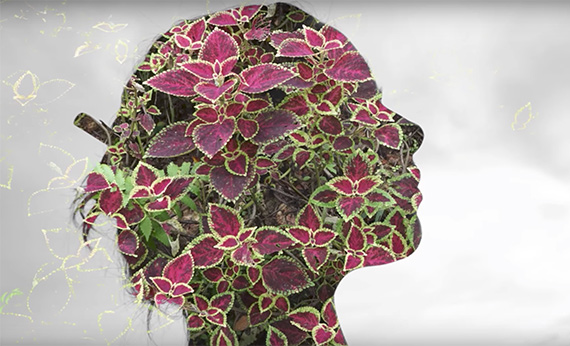Experimenting with double exposures—that is, two or more compositions merged into a singular frame—is an excellent means of sparking some creativity. Unfortunately, it’s not always as easy to accomplish as it was in the days of film. Back before today’s digital camera, creating an exposure on top of an existing exposure was as easy as not advancing the film. Now, most image makers rely on post-processing tools like Adobe Photoshop to attain similar results, but many new cameras allow you to create double exposures in-camera. David Flores explains:
The tricky part of the equation is that the method for making digital double exposures varies between cameras. While we won’t be covering the how-tos across all of the models out there, we did want to provide a quick overview of the mechanics some of the major brands have to offer.
For Fujifilm Users
If you’re a fan of doing things the old fashioned way, the double exposures produced by Fujifilm cameras may suit your needs. Like a film camera, Fuji allows users to combine two consecutive shots (provided that the second exposure is made before too much time passes or the camera powers down).
Though the process is significantly less flexible than the ones employed by Canon or Sony, Fuji does have one quality that’s incredibly beneficial to making double exposures. After you’ve made your first exposure, you have the option of viewing image one as a digital overlay in the electronic viewfinder or camera LCD panel. That means that photographers can see exactly what the exposure will look like before snapping the shutter at all.
For Canon Users
Canon offers its users quite a bit of creative freedom when it comes to the double exposure features it provides. Image makers can combine up to nine exposures at a time and can try out four different blending modes. By a long shot, Canon offers more options and allows more room for experimentation than its competition.
One of the coolest features? Canon lets you select a base image for your double exposure at any time. That means that it’s possible to make a portrait in a controlled studio environment, then head out to another location entirely for exposure number two.
For Sony Users
A bit less overwhelming than Canon and less rigid than Fujifilm, Sony’s double exposure options provide photographers with a happy medium. What’s more, Sony’s system allows the most room for mistakes. Once you’ve made the first part of the double exposure, it’s possible to keep shooting second shots until you’re completely satisfied with your finished product.
And if you want to add a bit of extra flair to your images, there are a number of preset modes that can be applied to images in-camera available for download via the Sony PlayMemories app.
“Multiple exposure is a technique that can unlock your spontaneity and creativity. You can combine elements of earth and sky, create mirror images, or flip a perspective. Combine text with a portrait, show progressions of time, or combine a subject with a meaningful texture. There’s no limit to the types of photographs you can make.”
Like This Article?
Don't Miss The Next One!
Join over 100,000 photographers of all experience levels who receive our free photography tips and articles to stay current:









Why did you leave Nikon, Samsung, Pentax and others out of the explanations. Were you somehow restricted to Mirrorless cameras? Why would that be?